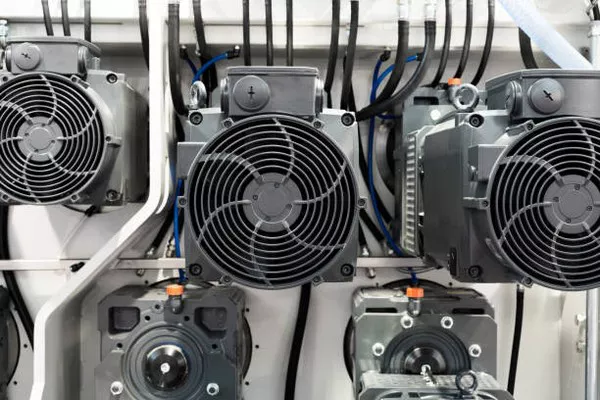In an era where energy consumption is a critical concern, small generators play a pivotal role in providing a reliable and portable source of power. Whether used for camping, emergency situations, or as backup power for small appliances, understanding the inner workings of these compact generators is essential. This article delves into the intricacies of how small generators function, shedding light on their components, working principles, and applications.
Components of Small Generators
Small generators consist of several key components that work in tandem to convert mechanical energy into electrical power. These components include the engine, alternator, fuel system, and control panel.
Engine:
At the heart of every small generator is an internal combustion engine. Typically fueled by gasoline or diesel, the engine’s primary function is to convert chemical energy from the fuel into mechanical energy through combustion. This mechanical energy is then used to drive the generator’s alternator, initiating the generation of electrical power.
Alternator:
The alternator, also known as a generator head, is a crucial component responsible for converting the mechanical energy provided by the engine into electrical energy. It consists of a rotor and a stator. The rotor, connected to the engine, rotates within a magnetic field generated by the stator. As the rotor spins, it induces a flow of electrons in the stator windings, producing alternating current (AC). The AC produced by the alternator undergoes further processing to become the usable electrical power required by various devices.
Fuel System:
The fuel system ensures the engine receives the necessary fuel for combustion. Small generators commonly use gasoline, as it is readily available and provides a convenient fuel source for portable applications. Some models may use diesel or propane, depending on the generator’s intended use and design. The fuel system includes a fuel tank, fuel pump, carburetor or fuel injection system, and a governor to regulate engine speed.
Control Panel:
The control panel serves as the nerve center of the generator, housing various components that allow users to monitor and control the generator’s operation. Common features found on the control panel include an on/off switch, circuit breakers, voltage regulators, and outlets for connecting devices. The control panel provides users with the ability to start and stop the generator, monitor output voltage, and protect the system from overloads.
Working Principles
Understanding the working principles of small generators involves tracing the energy conversion process from fuel to electricity. The following steps provide a detailed overview of how these compact power sources operate:
Fuel Combustion:
The process begins with the introduction of fuel into the engine’s combustion chamber. In small generators, the fuel is typically gasoline, although diesel or propane-powered models are also available. The engine ignites the fuel using a spark plug, initiating controlled combustion.
Mechanical Energy Generation:
As the fuel combusts, it produces high-pressure gases that force the engine’s piston to move. This reciprocating motion is converted into rotary motion, thanks to the engine’s crankshaft. The rotating crankshaft is connected to the alternator, allowing the mechanical energy generated by the engine to be transferred to the alternator.
Alternator Operation:
The alternator’s rotor, attached to the engine’s crankshaft, begins to spin within the stator’s magnetic field. This rotational movement induces a flow of electrons within the stator windings, creating an alternating current (AC). The AC produced by the alternator is characterized by its constantly changing direction.
Rectification and Voltage Regulation:
To make the electricity generated by the alternator usable, it undergoes a process called rectification. Rectifiers within the generator convert the AC into direct current (DC). Additionally, voltage regulators ensure that the output voltage remains stable within the desired range, preventing fluctuations that could potentially damage connected devices.
Applications of Small Generators
Small generators find applications in various scenarios due to their portability, versatility, and ease of use. Some common applications include:
Camping and Outdoor Activities: Small generators are ideal for providing power in remote locations where access to the electrical grid is limited or nonexistent. Campers and outdoor enthusiasts often rely on these generators to run lights, charge electronic devices, and power small appliances.
Emergency Power Backup: In the event of a power outage, small generators can serve as a reliable source of backup power for essential appliances and devices. They are particularly useful for powering refrigerators, medical equipment, and communication devices during emergencies.
Construction Sites: Small generators are widely used on construction sites to power tools, lighting, and other equipment. Their portability allows for flexibility in powering various construction activities without relying on a fixed electrical infrastructure.
Recreational Vehicles (RVs): RV owners often use small generators to power onboard appliances and electronics while on the road or during camping trips. These generators provide a convenient and independent source of power for the mobile lifestyle.
See Also How Does A Generac Generator Get It’s Power? A Comprehensive Guide
Conclusion
Small generators play a crucial role in providing portable and reliable power in a variety of settings. Understanding their components and working principles allows users to make informed decisions about selecting, operating, and maintaining these compact power sources. Whether used for recreational activities, emergency backup, or construction projects, small generators contribute to a more flexible and resilient approach to meeting our energy needs. As technology advances, we can expect continued improvements in the efficiency, durability, and environmental impact of small generators, further enhancing their role in our daily lives.

